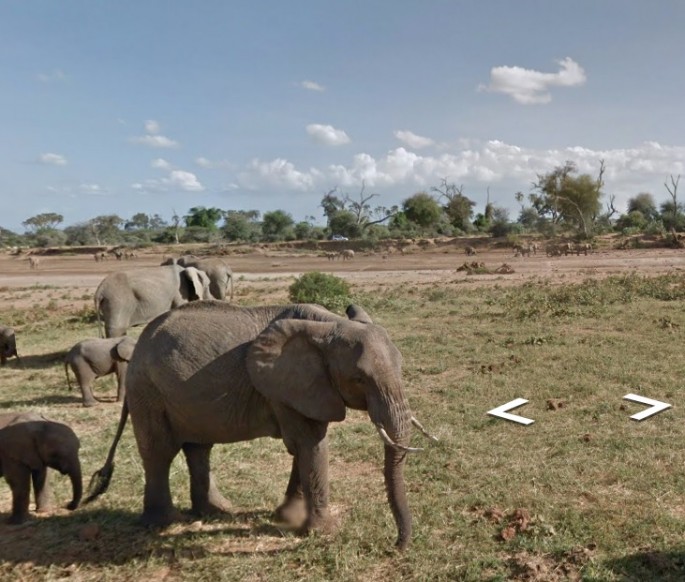For the first time ever, Google Street View launched its unprecedented views of the Samburu National Park in Kenya with its newest maps that allows online users to have a virtual safari tour inside the reserve.
This joint initiative is launched together in collaboration with the Save the Elephants charity that aims to promote wildlife conservation especially in the region. This project also focuses on telling unique stories about the elephant families residing in the park.
In February 2015, a car from Google Street View drove around the park in order to alleviate any fears about the tool being used as an advantage by poachers. The route also involves some 165 square kilometers of roads traversing across the central Kenyan reserve where it does not allow the user to go off road. Among the wildlife seen at the reserve are elephants, zebras and leopards.
The Kenya Tourist board also announced that this is the first national park in the country to allow virtual access inside the reserve. According to Farzana Khubchandani of Google Kenya, by bringing Street View to Samburu, we hope that this can inspire people from around the world to gain a better understanding and appreciation for elephants.
Samburu's county governor, Moses Lenolkulal, was also present at the ceremonial launch stating that the more people who can be exposed to our culture, people and majestic elephants including other wildlife where everything co-exists, more conservation efforts and sustainability culture can be applied to this fragile ecosystem, for the future of many more generations.
Among the two main elephant families that are captured by Street View are the Harwoods and Spice family that are differentiated with the shape of their tusks. According to head of field operations of the Save the Elephants, David Daballen, he can already recognize more than 600 elephants in the park, writing about it on a Google blog post. He adds that this special glimpse into the park can someday inspire people to help the plight of the elephants.
To date, environmentalists and conservationists are saying that ivory trade and continuous loss of habitat are placing the African elephant population at extreme risks. There are now an estimated 100,000 elephants that are killed for their tusks in Africa between 2010 and 2012, according to Save the Elephants.



























